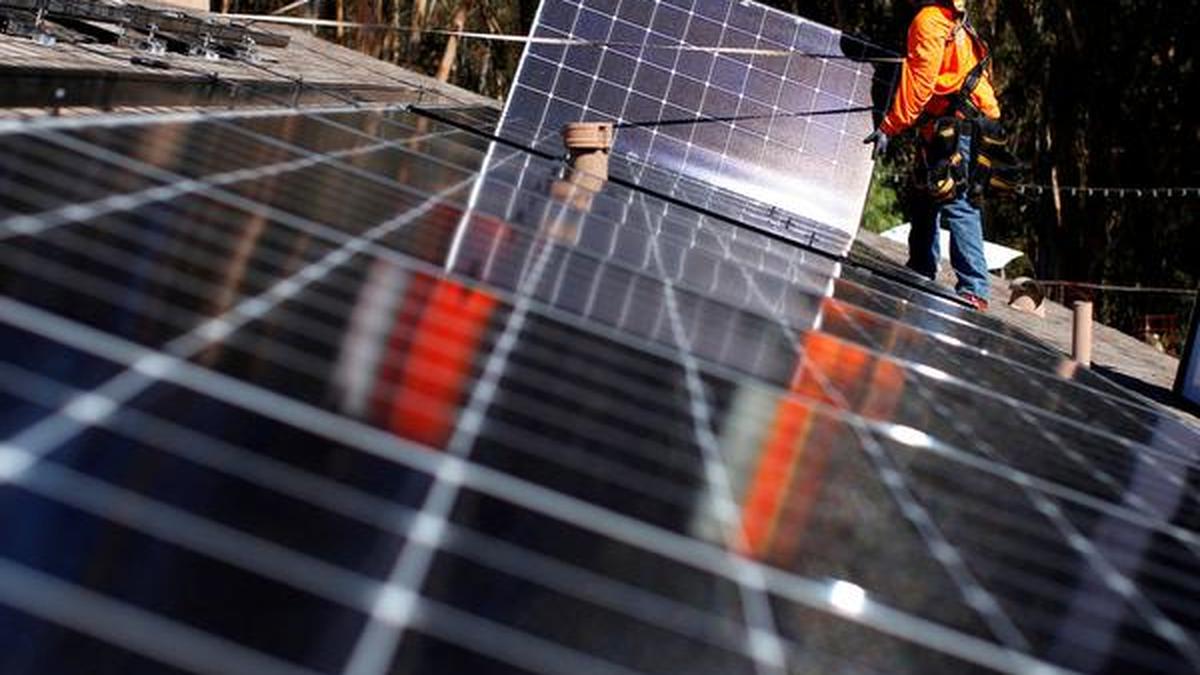
Firm to produce ‘rectangular’ solar cells that require less land
The Hindu
Solex Energy Limited plans to manufacture India's first rectangular solar cells, increasing efficiency and reducing land requirements.
With land for solar energy parks increasingly becoming a constraint, Solex Energy Limited, a Surat-based solar-instruments manufacturer, announced on Monday (September 30, 2024) that it plans to manufacture India’s first “rectangular” solar cells. The solar cells commonly used in Indian panels are square but cut down in the middle (effectively making them rectangular).
A company spokesperson said Solex’s cells would be made rectangular. This would increase the effective power produced by 7%, improve the structural efficiency of the cells, require no significant changes in associated installation costs, and, crucially, require less space for a similar power output.
“Normally, to produce 1 MW, a panel needs 2,000 solar cells. With this technology, we will need only 1,700. If three acres were required before, now you will need 2.5,” said Chetan Shah, Chairman & Managing Director of Solex Energy Limited.
The standard cells in vogue are squares of 182 mm length. The new cells that Solex hopes to locally manufacture by 2026 will be 182 mm wide and 210 mm long.
The company has sourced this technology from China, said Rajat Gupta, head of marketing, and the early batch of cells being deployed in India will be imported. The company is looking to invest ₹8,000 crore by 2030 and expects to scale up manufacturing from the current 2 GW (gigawatt, or 1000 MW) to 5 GW by that year. It also aims to increase its module manufacturing capacity from 1.5 GW to 15 GW.
India has the world’s fifth-largest installed solar power capacity of 84 GW and aims to ramp up to 280 GW by 2030. A MW of solar power requires about 3-5 acres of land. This translates to 75,000 square kilometres of land. Finding land for solar parks has been a challenge and a source of fractious litigation. About 80% of India’s installed solar capacity is in solar parks, chiefly in Rajasthan and Gujarat.
In addition to this, the wide range in temperatures and climate means that solar cells operate at varying degrees of efficiency. “Over the years, solar cells in India have evolved, and different technologies are being tested. In the international markets, a category called N Type TOPCON (Tunnel Oxide Passivated Contact) cells is becoming popular, and they seem more suited for India in terms of climate and efficiency. What is standard in Europe doesn’t always work here,” said Gupta. While a few Indian firms are sourcing N-Type TOPCON, Solex’s variation is the N-Type TOPCON-R (for rectangular).

All glasses are cool, but 3D glasses take it to the next level—they’re the supercharged version of ordinary eyewear. They bring you closer to living your dream of stepping right into the movie you’re watching. But have you ever wondered how 3D movies create the thrilling illusion of objects flying straight at you?

German astronomer Simon Marius is best remembered for his disputes with Galileo Galilei over priority for discovering Jupiter’s four major moons. This, despite the fact that Marius definitely made other significant contributions during his time, including being the first to use a telescope to observe the Andromeda Galaxy on December 15, 1612. A.S.Ganesh hands you the details, without taking sides…









